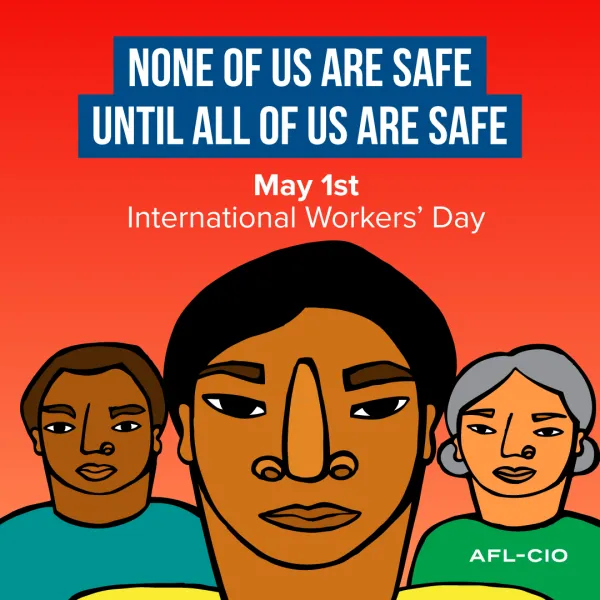A Brief History of International Workers Day-May Day

May Day earliest roots are in a Festival of Spring. The Roman Republic would celebrate the Goddess of Flowers, named Flora. Flowers and flora were the center of the celebration of Flora. Traces of the tradition can still be seen to this day in the Northeast part of the US as people have continued a tradition of celebration May Day and the coming of Spring by anonymously leaving baskets of flowers at people’s doors.
In Gaelic culture, May Day celebrations also included the festival of Beltane, “lucky fire,” on the night of April 30th. Part of this celebration was to bless cattle and other livestock, which included making cattle jump over fire to protect their milk from fairies. People would also jump over the fire.
In the 18th century, Roman Catholics began to add devotions to the Blessed Mother, the Virgin Mary, on May Day. Celebrations of Spring were at the heart of May Day and began to include the honoring of the planting season. It is only right to honor those who plant the crops, as well.
In the late 19th century, as trade unions and the labor movement grew, a variety of days were chosen by trade unionists as a day to celebrate labor. May Day was chosen to be International Workers’ Day to commemorate the 1886 Haymarket affair in Chicago. On May 1st, 1886, there was a general strike for an eight-hour workday. On May 4th, the police acted to disperse a public assembly in support of the strike, when an unidentified individual threw a bomb. The police responded by firing on the workers. This led to the deaths of seven police officers and four civilians; sixty police officers were injured as well as numerous civilians. Hundreds of labor leaders and sympathizers were later rounded up and four were executed by hanging, after a trial that was seen as a miscarriage of justice.
On May 5th, 1886, in Milwaukee, the state militia was called out by the Governor of Wisconsin at the request of North Chicago Rolling Mills in Bay View to protect their mill. A strike for the eight-hour day a few days earlier had shut down most of the businesses in the area except for North Chicago Rolling Mills. As the workers, supports, and their families approached the mill, one of the militias fired upon the crowd which resulted in chaos as a total of seven individuals were killed, including a seven-year-old boy and a man feeding chickens in his yard. This became known as the Bay View Massacre, or the Bay View Tragedy.
In 1889, at a meeting in Paris held by the first congress of the Second International (an organization of Socialists and Labor Parties,) Raymond Lavigne set forth a proposal calling for an international demonstration on the 1890 anniversary of the Haymarket Massacre.
May Day was formally recognized as an annual event at the International’s second congress in 1891. In Amsterdam in 1904, the International Socialist Congress called on all Social Democratic Party organizations and trade unions of all countries to demonstrate energetically on the First of May for the legal establishment of the 8=hour day.
On May 1st, 2017, workers around the country joined with Immigrants and Immigrant Worker Rights organizations to march for rights and dignity for all workers.
May 1st continues to this day to be an international day to honor all workers and lift up the need for workers’ rights around the globe.
-Written by Jay Reinke, Community Services Liaison, MALC
